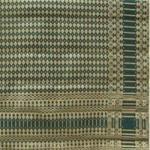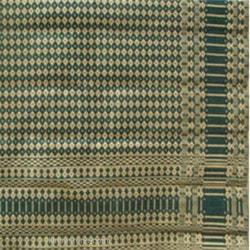Ehrāmi bāfi
Typically, the dimensions of this fabric are 100 × 70cm and 120 × 90cm. The Ehrāmi comes in two colors: white or black, most of the time; however, green and white as well as red and white specimens were also found. A craftsman can produce, in the space of a day, four Ehrāmi with dimensions of 100 × 70 cm. In ancient times, this product was mostly used by those who went on pilgrimage to Mecca; today, however, following the change of customs, the Ehrāmi is used as a tablecloth, carpet (also for prayer), cover (for beds, sofas, stairs), etc.
The processing of the Ehrāmi (Ehrāmi bāfi or Sajjādeh bāfi) is a functional handicraft technique typical of Iran, which originates from the pro-priateness of the Iranians. This traditional hand-assembled product is worked in the provinces of Yazd and Khuzestān (in the cities of Shushtar, Dez-ful, Behbahān, Susangerd and Masjed Soleymān).
The designs of the typical product of Yazd are mainly geometric figures, mostly rhombuses. Reasons and methods in processing this native industry have remained unchanged over the years.


